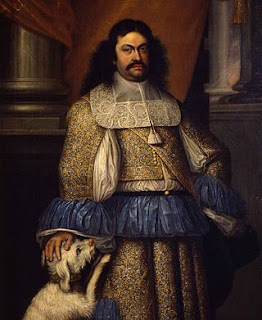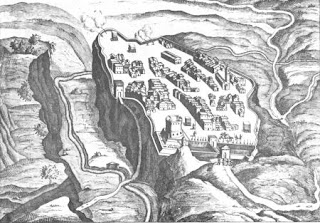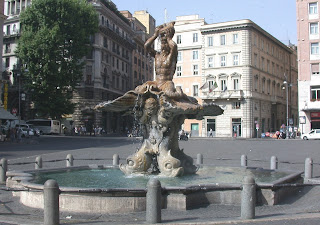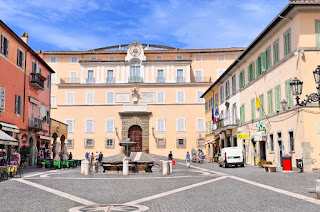Feuding with the Popes led to the destruction of a city
 |
| A portrait of Ranuccio II Farnese by the Flemish Baroque painter Jacob Denys |
Ranuccio II was the eldest son of Odoardo Farnese, the fifth sovereign duke of Parma, and his wife, Margherita de’ Medici.
Odoardo died while Ranuccio was still a minor and, although he succeeded him as Duke of Parma, he had to rule for the first two years of his reign under the regency of both his uncle, Francesco Maria Farnese, and his mother.
The House of Farnese had been founded by Ranuccio’s paternal ancestor, Alessandro Farnese, who became Pope Paul III. The Farnese family had been ruling Parma and Piacenza ever since Paul III gave it to his illegitimate son, Pier Luigi Farnese. He also made Pier Luigi the Duke of Castro.
While Odoardo had been Duke of Parma he had become involved in a power struggle with Pope Urban VIII, who was a member of the Barberini family. The Barberini family were keen to acquire Castro, which was north of Rome in the Papal States.
When Odoardo found himself unable to pay his debts, Urban VIII responded to the creditors’ pleas for help, by sending troops to occupy Castro.
 |
| How Castro may have looked before it was destroyed by the army of Innocent X |
However, Ranuccio II refused to pay the debts incurred by his father, despite the fact Oduardo had signed a peace treaty agreeing to do so. He also refused to recognise the new Bishop of Castro, appointed by Urban VIII’s successor, Innocent X.
In 1649, the new bishop, Cardinal Cristoforo Giarda, was murdered on his way to Castro. Innocent X accused Ranuccio of ordering the murder and in retaliation sent troops to besiege Castro and then raze it to the ground.
Later the same year, Ranuccio’s troops were crushed in another battle, leaving him with no means of winning back his lost territory, but in 1672 he bought Bardi and Compiano, small towns near Parma, to increase the size of the Duchy.
Ranuccio II was married three times and had 14 children, of whom only six lived to become adults.
He died in Parma in 1694 at the age of 64 and was succeeded as Duke of Parma by his eldest surviving son, Francesco.
Ranuccio II is buried in the Sanctuary of Santa Maria della Steccata in Parma.
| The Ducal Palace in modern Ischia di Castro |
Castro in Lazio was a fortified city on a cliff, near the border between Tuscany and Lazio. The city and surrounding area was created a Duchy in 1537 by Pope Paul III, who made his illegitimate son, Pier Luigi Farnese, its duke, to be followed by his first born male heirs. The Duchy stretched from the Tyrrhenian Sea to Lago di Bolsena. Ranuccio II Farnese, the last Duke of Castro, was forced to cede the land back to Pope Innocent X. The present day comune, Ischia di Castro, in the province of Viterbo, takes its name from the ancient city of Castro destroyed by papal forces. Ischia di Castro still has a Ducal Palace, where members of the Farnese family used to live.
 |
| The Renaissance church of Santa Maria della Steccata in the centre of Parma, where Ranuccio II was buried |
The Shrine of Santa Maria della Steccata, where Ranuccio II was buried, is a Renaissance church in the centre of Parma. The name derives from the fence, or steccata, used to contain the many pilgrims who came to visit the image of a Nursing Madonna enshrined within the church. The crypt of the church contains the tombs of 26 members of the Farnese family, including that of Ranuccio II.
More reading:
How a war against Parma backfired on Pope Urban VIII
The legacy of the great Parma painter known as Parmigianino
Innocent X - a pope dominated by his sister-in-law
Also on this day:
1688: The birth of Maria Luisa of Savoy, who ruled Spain as a teenager
1944: The birth of climber Reinhold Messner
Home





